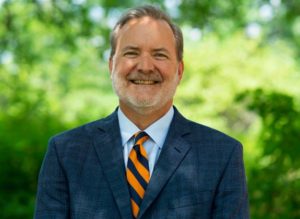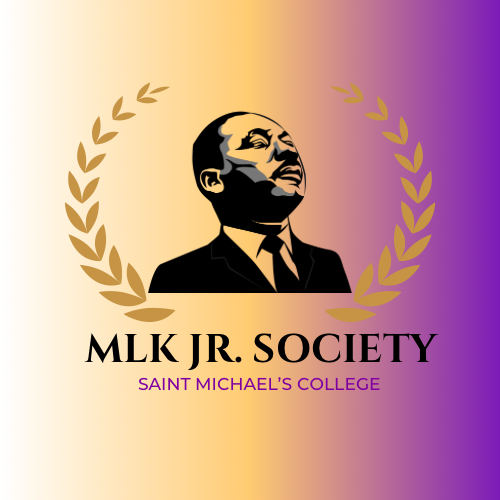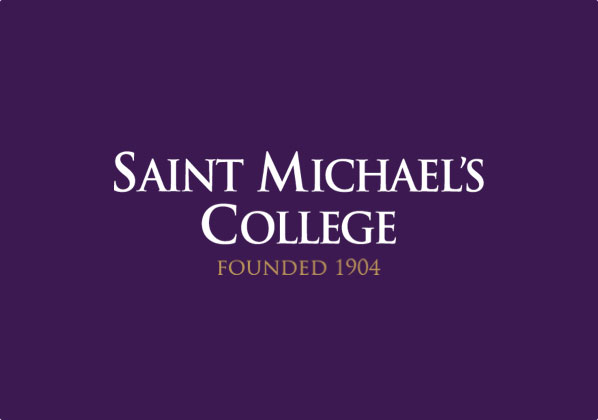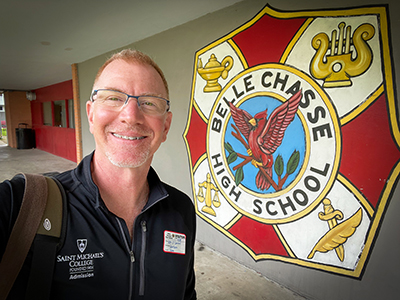Ayres: Border closure taught lessons to U.S., Canada
Director of Saint Michael's Institute for Global Engagement contributes to virtual webinar, "Reunited States: Onward and Upward," after earlier role with Border Barometer project

Jeffrey Ayres
A Saint Michael’s faculty expert on U.S.-Canada relations is an influential voice in ongoing conversations among American and Canadian scholars, business leaders and government officials concerning key lessons from the extended closure of the U.S. Canada border last year during the COVID-19 pandemic.
The border has reopened to “non-essential traffic” on both sides in recent months, said Jeffrey Ayres, professor of political science and international relations and director of the Saint Michael’s Institute for Global Engagement, who contributed to a January 28 webinar titled “Reunited States: Onward and Upward.”
This virtual event, sponsored by the New England Canada Business Council as well as the Consulate General of Canada in Boston and the Government of Quebec, was a follow-up to the Border Barometer project to which Ayres was a major contributor last year, writing a section on the border shared by Quebec, Vermont and northeastern New York.
“The idea for this recent webinar was that the start of the new year is a good time to revisit the impact of the border closure, and to reflect on how things have changed now that the border is open,” Ayres said. “The thrust of it was to address questions such as: how did the border closure reshape border communities in New England and Eastern Canada? What are the economic and social prospects for the respective communities now that the border has reopened? What are the continental implications and lessons learned from this region and all across the U.S.-Canada border?
Ayres said he heard near consensus among participants on several key points:
- That “impacts were especially damaging on local communities along the border from the mom and pop cross-border business to families accustomed to crossing regularly.” Family connections and small businesses that depended on cross-border traffic were deemed “non-essential” in closure guidelines and ended up feeling much more dramatic impacts than official planners may have anticipated. “To divide communities this way dismissed the importance of family connections, as close families and friends were not able to see each other for months on end,” said Ayres, so this will be an issue of which to be more mindful in any possible future border-closing scenarios.
- A considerable amount of bilateral collaboration and policy-making occurred following the abrupt border closure by the U.S. to all traffic following the September 11, 2001 terrorist attacks. “Both countries recognized the necessity of closing the border in March 2020 as the pandemic accelerated, but also that the essential traffic continuation was critical in being able to maintain commerce and cross-border supply chains – it was critical that essential traffic kept lowing,” and truck traffic returned relatively quickly to nearly pre-pandemic levels.
- Some in the webinar argued that the closure this time was too heavy-handed and needed to be more sensitive to pronounced regional differences that exist along so vast a border, from Alaska and Yukon all the way to Maine and New Brunswick. “A major takeaway from this experience of shutting the border for so long is to think next time about mitigating risk rather than shutting down all non-essential travel,” Ayres said.
- Many others argued that the two countries need to do a better job of collaborating since, even going back to March of 2020 when the pandemic took hold, “it was clear the entire time that there wasn’t a significant amount of bilateral coordination taking place,” even though the U.S. and Canada closed their borders on the same day.
- Traffic remains down along either side of the border given the many questions raised among both populations by the omicron variant so it’s too early to take stock of the full impacts of the closure. “A lot remains unclear and there is a lot of hesitancy by people to cross the border so it will be quite some time to be back to pre-pandemic levels,” Ayres said.
Moderating the webinar discussion was Chris Sands, director of the Canada Center of the Woodrow Wilson Center, a policy think tank in Washington D.C. Other participants included business people from the New England Business Council, some government leaders and other scholars from the earlier Border Barometer study including Ayres.






